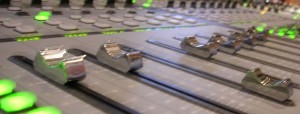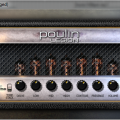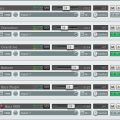1. Filter out the low end
When recording guitars some inaudible discord is always included in the low end. The only thing it does is collide with the bass, so filter it out. One way of doing it is adding a filter and raising the cutoff frequency until you hear a change in sound, and then back down a bit.
2. Filter out the high end
Likewise with the highest frequencies, strange unwanted harmonics be here. Do the same as with the low end cutoff filter.
3. Don’t overdo the distortion
A guitar tone that sounds great by itself can easily have too much distortion for a mix, making it muddy and fuzzy.
4. Don’t kill your mids
A classic metal tone is scooped – high bass, high treble and low mids. Again, this might sound good by itself but it will drown in the final mix.
5. Don’t use up all the space
Even though you play guitar and want the guitar to be the main instrument, make sure all instruments are clearly audible by correct volume on tracks and no fighting over the frequencies.
6. Find the sweet spot
There is usually a quite small frequency band that holds a lot of the character from your guitar tone. Use a parametric EQ to find it and boost it.
7. Cut the cheap spot
I haven’t really been able to corroborate this myself, but I’ve heard it from multiple sources. Around 800 Hz there’s something that makes guitars sound cheap. Cut a bit here.
8. Increase sustain with a compressor
If you add a compressor with long release you will increase the sustain of your chords.
This is a rewritten short list of 17 tips I found at a blog devoted to home studio and mixing called Audio Issues (part 1: Top 10 Guitar Mixing Techniques and part 2: 7 Advanced Production Tips for an Amazing Guitar Mix)





